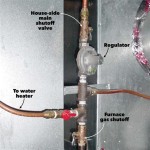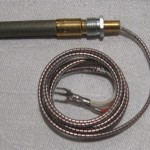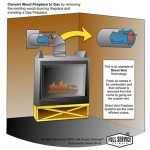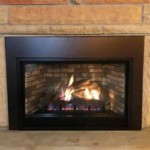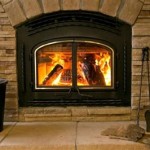Free Standing Direct Vent Propane Fireplace: A Comprehensive Overview
A free-standing direct vent propane fireplace offers a blend of aesthetic appeal, efficient heating, and installation flexibility for homeowners. Unlike traditional wood-burning fireplaces, these units operate on propane gas and utilize a direct vent system that exhausts combustion byproducts directly outside. This eliminates the need for a conventional chimney and allows for installation in a wider range of locations within a home.
This article delves into the key features, benefits, installation considerations, maintenance requirements, and safety aspects of free-standing direct vent propane fireplaces, providing a comprehensive understanding of these heating appliances.
Understanding Direct Vent Technology
Direct vent technology is a crucial aspect of these fireplaces. This system utilizes a sealed combustion chamber that draws air from outside the home for combustion and expels exhaust gases directly back outside through a coaxial or concentric vent pipe. The vent pipe typically runs horizontally through an exterior wall or vertically through the roof. Because the system is sealed, no room air is used for combustion, and combustion byproducts cannot enter the living space. This design enhances safety and efficiency.
The coaxial vent system consists of a pipe within a pipe. The inner pipe exhausts combustion gases, while the outer pipe draws in fresh air for combustion. A concentric vent system uses two separate pipes, one for intake and one for exhaust, but connects to the fireplace through a single fitting. Both systems ensure that the fireplace operates independently of the home's air supply, preventing drafts and improving heating efficiency.
The sealed combustion chamber also contributes to improved indoor air quality. Since no room air is used for combustion, there is no depletion of oxygen or introduction of harmful pollutants into the living space. This is particularly important for homes with energy-efficient construction that may have limited natural ventilation.
Advantages of Free-Standing Propane Fireplaces
Free-standing direct vent propane fireplaces offer several advantages over other types of fireplaces and heating systems. These benefits contribute to their growing popularity among homeowners seeking efficient, convenient, and aesthetically pleasing heating solutions.
One significant advantage is their ease of installation. Unlike traditional fireplaces that require extensive masonry work and chimney construction, free-standing units can be installed relatively quickly and easily. The direct vent system eliminates the need for a chimney, reducing installation costs and allowing for placement in various locations, including rooms without existing fireplaces.
Another key benefit is their high heating efficiency. Propane fireplaces convert a large percentage of the fuel's energy into usable heat, making them more efficient than wood-burning fireplaces. This can lead to lower heating bills and reduced energy consumption, especially when used as a supplemental heating source. Many models also feature thermostatic controls that allow homeowners to maintain a consistent temperature and further optimize energy usage.
Convenience is also a major factor. Unlike wood-burning fireplaces that require manual refueling and ash removal, propane fireplaces operate at the touch of a button. They offer instant heat and can be easily controlled with a remote or thermostat. The absence of wood storage and ash disposal also simplifies maintenance and reduces the overall workload for homeowners.
Aesthetics also play a significant role. Free-standing propane fireplaces are available in a wide range of styles, finishes, and sizes, allowing homeowners to choose a unit that complements their décor. They often feature realistic flame patterns and ember beds, creating a cozy and inviting atmosphere. The visual appeal of a fireplace can enhance the ambiance of a room and increase the overall value of a home.
Finally, propane fireplaces provide a safer heating option. Direct vent systems ensure that combustion byproducts are safely exhausted outside, reducing the risk of carbon monoxide poisoning and other health hazards. The sealed combustion chamber also prevents sparks and embers from escaping into the living space, minimizing the risk of fire.
Installation Considerations and Requirements
Proper installation is crucial for the safe and efficient operation of a free-standing direct vent propane fireplace. It is recommended to hire a qualified and licensed professional to handle the installation process. This ensures that the unit is installed according to manufacturer's specifications and local building codes.
Before installation, it is essential to determine the appropriate location for the fireplace. Factors to consider include proximity to a propane gas line, access to an exterior wall or roof for venting, and compliance with clearance requirements for combustible materials. The manufacturer's instructions will specify the minimum clearances required to prevent overheating and fire hazards.
The venting system must be installed correctly to ensure proper exhaust of combustion gases. The vent pipe must be properly sealed and supported to prevent leaks and maintain its structural integrity. The length and configuration of the vent system must also comply with the manufacturer's specifications to ensure adequate draft and prevent backdrafting.
Connecting the fireplace to the propane gas line requires expertise in gas plumbing. A licensed gas fitter should handle this task to ensure a safe and leak-free connection. The gas line must be properly sized to provide adequate gas flow to the fireplace, and a shut-off valve should be installed for easy maintenance and emergency shut-off.
After installation, the fireplace should be thoroughly tested to ensure that it is operating correctly and safely. This includes checking for gas leaks, verifying proper venting, and confirming that the ignition system and controls are functioning as intended. The installer should also provide the homeowner with instructions on how to operate and maintain the fireplace.
Maintenance and Safety
Regular maintenance is essential for ensuring the long-term performance and safety of a free-standing direct vent propane fireplace. Following a consistent maintenance schedule can prevent problems and extend the lifespan of the unit.
One important maintenance task is to clean the glass front of the fireplace regularly. Over time, soot and other deposits can accumulate on the glass, reducing visibility and affecting the appearance of the flame. Use a specialized glass cleaner designed for fireplaces to remove these deposits without damaging the glass.
The vent system should also be inspected periodically for any signs of damage or blockage. Check for loose connections, corrosion, or obstructions that could impede airflow. If any problems are found, they should be addressed promptly by a qualified technician.
The burner and pilot assembly should be cleaned annually to remove any debris or carbon buildup that could affect their performance. This can be done by carefully brushing the components with a soft brush and using a vacuum cleaner to remove any loose particles. It is important to follow the manufacturer's instructions for cleaning these components to avoid damaging them.
It is also crucial to have the fireplace inspected annually by a qualified technician. A professional inspection can identify potential problems that may not be apparent to the homeowner. The technician can check the gas connections, venting system, and other critical components to ensure that they are functioning properly and safely.
In terms of safety, it is important to follow all manufacturer's instructions and safety guidelines. Never use flammable liquids or materials near the fireplace. Keep children and pets away from the fireplace when it is operating. Install and maintain carbon monoxide detectors in the home to provide early warning of any carbon monoxide leaks.
If you smell gas, immediately turn off the gas supply to the fireplace and evacuate the area. Do not use any electrical devices or open flames that could ignite the gas. Contact a qualified gas fitter or the local fire department for assistance.
By following these maintenance and safety guidelines, homeowners can ensure that their free-standing direct vent propane fireplace provides years of safe, efficient, and enjoyable heating.
In conclusion, free-standing direct vent propane fireplaces are a popular and efficient heating solution for homeowners. They offer a combination of aesthetic appeal, convenience, and safety. Understanding the technology, installation considerations, and maintenance requirements is crucial for maximizing the benefits of these appliances.

Vantage Bayview Freestanding Direct Vent Gas Or Propane Fireplace Fireplaces By Cameron

Vantage Bayview Freestanding Direct Vent Gas Or Propane Fireplace Fireplaces By Cameron

Direct Vent Gas Stoves In Dc

Oxford Direct Vent Gas Stove The Place

Natural Gas Heating Fireplace Stoves Freestanding Direct Vent Stove Propane For Indoor Use

Vantage Bayview Freestanding Direct Vent Gas Or Propane Fireplace Fireplaces By Cameron

Freestanding Gas Stoves Valor Fireplaces

Kingsman 27 Inch Free Standing Direct Vent Gas Stove

Freestanding High Efficiency Direct Vent Gas Fireplaces Inserts Stoves Godby Hearth And Home

Enviro S Gas Westport Cast Iron Stove

